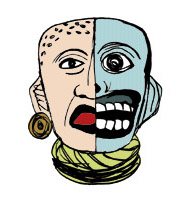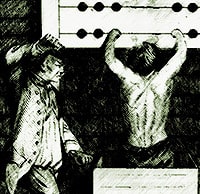…
Copyright 2024 James LaFond
A Crackpot Book
Lynn Lockhart Publisher
…
Dust Cover
Battle is a gaming system intended to introduce historical war gaming to the leisure gamer and video gamer. The gaming components required are everyday items found in many households and retail outlets. Battle is designed to simulate combat in the Early Modern Era, the era of musketry, spanning from 1453 through 1864. The system is best suited to the era from the battle of Rockroi in 1648, which ended the Thirty Years War, and Waterloo in 1815. Ancient Warfare, Medieval Warfare, The American Civil War and Modern Colonial Warfare in the Victorian Era are addressed in variants.
The intention of Battle is to demonstrate the fundamentals of Modern Warfare, based as it is in the Age of Musketry, during which the principles of combined arms maneuver were adapted to firearms technology without abandoning the ancient technologies of muscle powered warfare. Adaptation of the most ancient weapon system, the spear in the form of the bayonet with the gun, in coordination with the ancient horse & sword, supported by canon, formed the basis for the modern art of combined arms warfare.
…
Game Components
-1 table
-1 set of 28 double six dominoes
-1 deck of playing cards
-5 to 10 dice, cube shaped
-5 to 10 dice, round cornered
-2 dollars in change
-1 to 6 drink coasters
-1 napkin
-2 pencils
-2 pieces of paper
-ash trays, salt shakers, plates and such may be used in special scenarios to represent impassible spaces.
…
Set Up
Battle is a game that, once learned, may be used to recreate any battle fought before the use of repeating firearms in 1865. The basic game represents an Early Modern divisional and corp size action, ideal for the battles of the American Revolution. To depict great battles of the Napoleonic or American Civil Wars a large table and multiple sets of components [and, Ideally multiple payers to each side] will be required. The motivating concept is to develop a game that will aid players in building table top gaming skills, in order to better understand the minds of the men who have by turns, built, conquered, ruled and ruined the world that we have inherited. It is hoped that such play will impart to the gamer some glimpse into the mindset of the Great Captains of history.
…
The Army You Have
The Great Captains of history, with the exception of Phillip of Macedon, lead and commanded the army they HAD risen to command, not the army they designed. To garner some sense for this and to make the usually weary “set up” phase of pre-play interesting and stimulating, the game set up itself will be played out. The interactive aspects of the game set up lends battle to the purpose of simulating wars such as the English Civil War, Thirty Years War, American Revolution and Civil War, and various European wars of succession, in which the contending parties were essentially battling with and over control of the same military leadership and force pools.
…
The Phases of Play Are:
-1. Mapping: Interactive Battle Space Building
-2. Mustering: Interactive Army Building
-3. Marshaling: Interactive Army Deployment
-4. Battle: Initiative Based Army Combat
-5. Rout: Pursuit and Retreat of a Broken Force
Each of these activities have their own chapter, with Battle being the focus. Chapter 4 will be broken into subsections.
Six additional chapters focus on historic unit types and scenario building.
…
Inspiration
“James, thank you so much for introducing me to a whole new level of autism!”
-“The Brickmouse” at a Baltimore coffee house, Sunday, September 24th, 2023
…
“It is no accident that Varg, Vox Day and you share with Elon Musk a background in table top war gaming. There must be something about that hobby that lends itself to thinking external to the social narrative imposed on the mass mind.”
-Lynn Lockhart, Editorial call with the author, February 14, 2024
Author’s Notes
In attempting to explain such war games as Tactics 2, Terrible Swift Sword, Empires in Arms, Gulf Strike, Proud Monster, the Civil War, Panzerblitz, Squad Leader, World in Flames, Lock and Load and the various ancients games ingeniously designed by Mark Herman, who is the Dean and Undisputed Champion of table top war game design, I sought for counters and randomizing devices in order to demonstrate the basic concepts of war gaming.
There sat a box of dominoes, counters that might represent units of soldiers in line and column.
There was also a deck of cards, providing an obvious means of issuing commands.
Dice suggested themselves as less strictly formed and smaller units, such as horsemen or irregular units such as rangers, riflemen and Indians.
Coins offered themselves as faction identifiers and strength counters.
Coasters, napkins, ash trays, suggested possible terrain features.
I sincerely hope that this learning game provides hours of enjoyable play to the reader and serves as an introduction to the art of war gaming to which I owe so much.
-James LaFond, Pittsburgh, Friday, October 13th 2023
Battle was redesigned from Sunday February 25 thru Thursday 29, 2024, in Portland, Oregon.
Dedication
To the fine memory of Jacob Johnson, who Developed our Feudal Estates card game in 2020 and 2021 and sadly passed in the winter of 2022, having been ill-treated by this evil world. His concept of using the 52 card deck of playing cards to represent class-based initiative in a power struggle game, has, here, in Battle, been combined with the rank and initiative concepts [using a die-10] developed by Mark Herman in his ancient battle games in the 1990s.
Combined Arms Warfare, from Ancient battles to modern “bug hunt” wars between USG and non-state forces, have always represented either class warfare, or, more often, the coordination of the efforts of two or more classes of men under a mutual leader in battle against a foe. For instance, the famed band of Spartans at the Battle of Thermopyle consisted of Royals, Equals and Slaves. This force of 600 [300 shield men and 300 javelin men] was at the core of an allied force of 7,000, each of which fielded men of two or three classes. The forces of the Black Powder Era were strictly stratified along class lines, with horsemen generally volunteers of the middle and upper classes and footmen slave conscripts of the lower class, commanded by generals who were often of the elite political class, even heads of state such as Frederick the Great. It was Jacob, whose family called him Jake or Jaker, who originally brought this to my attention over a discussion of the origin of playing cards.
…
Contents
-1. Mapping: Interactive Battle Space Building
-2. Mustering: Interactive Army Building
-3. Marshaling: Interactive Army Deployment
-4. Battle: Initiative Based Army Combat
-5. Rout: Pursuit and Retreat of a Broken Force
-6. Conquistador: Soto’s Entrada & Tribal Forces
-7. Napoleonic Forces: French, Austrian, Ottoman & Haitian
-8. Ancient Forces: Hellenistic, Roman & Tribal
-9. Medieval Forces: Viking, Christian, Saracen & Magyar
-10. Colonial Forces: Some Thoughts on Last Stands
-11. Crowning Glory: Ideas for American Civil War Battles











